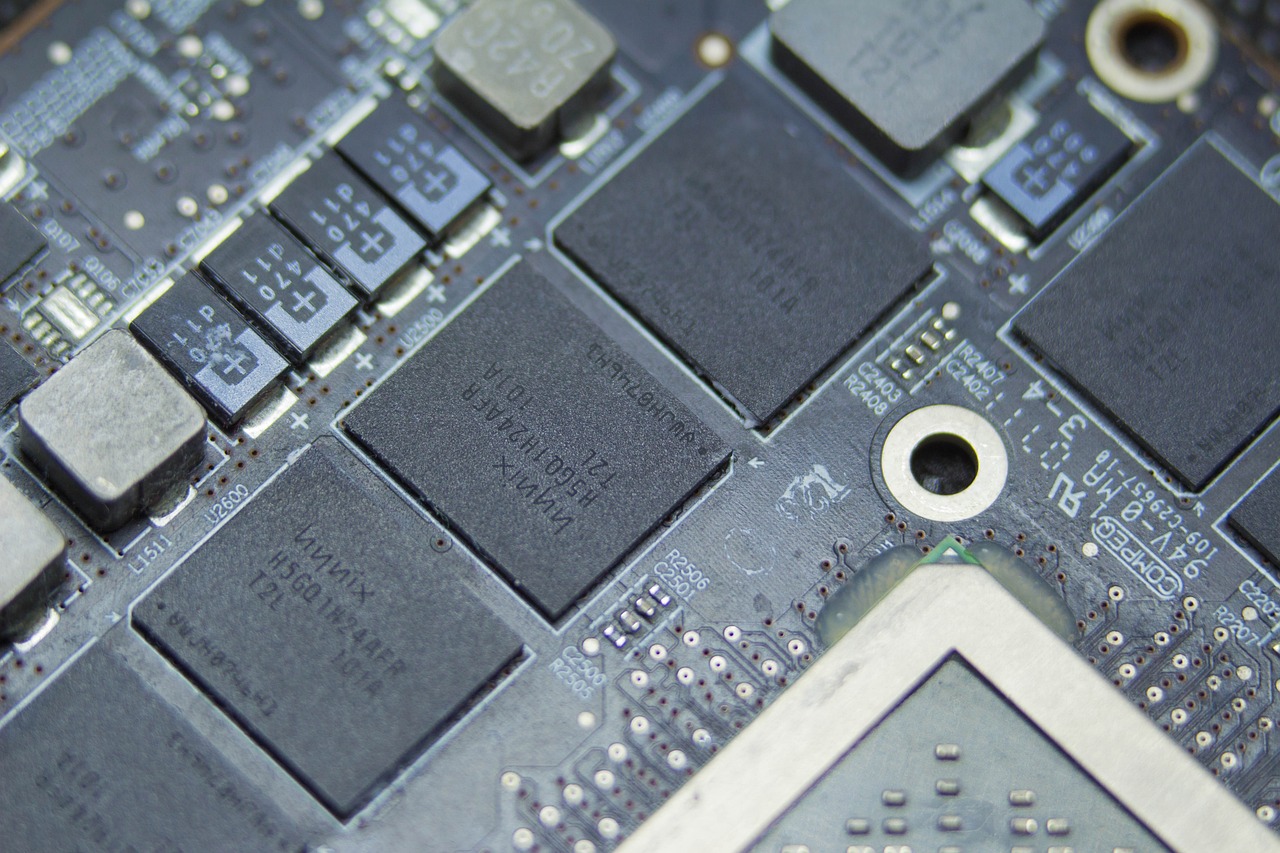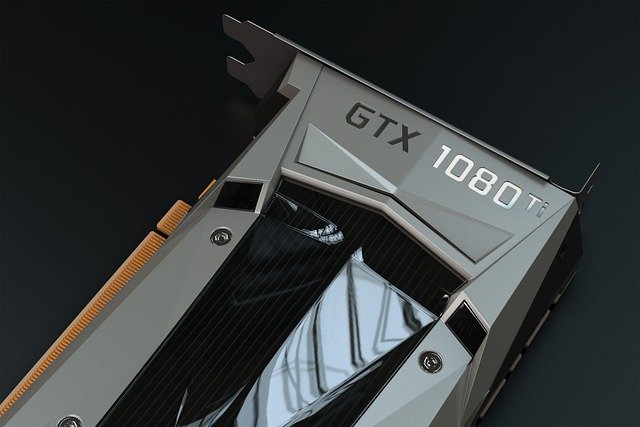
I think there are many people who have tried deep learning but do not know how to do it. If the specs of your computer are low, you will consider a GPUs to increase the processing power.
Therefore, here we will comprehensively explain how to choose and recommended GPUs for GPUs that are often used for deep learning.
What are GPUs?
First, let’s talk about GPUs.
GPU is an abbreviation for “Graphics Processing Unit”, and is a semiconductor chip that performs the calculation processing necessary for image rendering such as 3D graphics. It is suitable for performing a large amount of simple calculation processing.
This feature is compatible with deep learning, and since it is high-performance and relatively inexpensive, GPUs have come to be used for deep learning.
Role
The CPU and GPU are important factors in determining the processing power of a computer. CPU is mainly responsible for processing. And the role of GPU is to process images and videos.
The processing power of the GPU is particularly important for 3D graphics that require high image quality functions.
Type
There are different types of GPUs, such as cloud, built-in GPU, and external GPU.
The advantage of the integrated GPU is that the cost can be kept down. And the advantage of external is that you can easily increase the graphics performance of your PC.
Each has advantages and disadvantages, so use the GPU that suits your purpose and budget.
Can Deep Learning Run Without a GPU?
Of course, deep learning can be executed without a GPU. However, deep learning without GPU has some problems.
- Training takes more than a few weeks without a PC with a GPU
- Tens of thousands of training data are often required
All of these things make it difficult to try.
Why use GPU for deep learning? 3 reasons
I will introduce the reason why GPU is used for deep learning.
- Difference between GPU and CPU
- Increased processing power
- Needs enough memory
We will explain each below.
Difference between GPU and CPU
First, I will explain why we use GPUs instead of CPUs for deep learning.
CPUs have few high-performance cores (usually around 4 to 64 cores), while GPUs have a large number of relatively low-performance cores (around 600 to 5000 cores).

Deep learning makes heavy use of matrix calculations. And GPUs have an advantage in such calculations.
Unlike CPUs, GPUs are not good at flexible calculations such as calculations with many conditional branches or calculations that cannot be parallelized, but instead they are good at calculating simple calculations in parallel. increase.
Being able to compute a large number of simple calculations at the same time is very compatible with deep learning.
Increased processing power
The second reason is increased processing power.
Since GPUs are good at parallel calculation, they are good at parallel processing ability, and using GPUs leads to improvement of processing ability.
Needs enough memory
A third reason is that it requires a lot of memory.
When using a GPU, it is important to have enough memory. Deep learning performs processing such as reading images, so Tensor_Core requires a large memory.
If you run out of memory, you won’t be able to do the learning itself, and you’ll have to stick to general machine learning.
How to choose a GPU suitable for deep learning
We will introduce five points for choosing a GPU suitable for deep learning.
- Cost performance
- Processing speed
- Latest model
- Manufacturer
- There is a notation of Tensor Core
We will explain each below.
Cost performance
The first point is cost performance.
If you plan to do deep learning on a small budget, use a GPU that costs less. However, even if it is cheap, if the performance is low, problems such as insufficient capacity may occur, so it is necessary to check both price and performance.
Processing speed
The second point is processing speed.
Calculation speed is very important in deep learning. If the processing speed is slow, the calculation will take time. Therefore, when choosing a GPU, be sure to check the processing speed.
Latest model
The third point is whether it is the latest model.
This is because the newer models tend to perform better.
Manufacturer
The fourth point is the manufacturer.
Some are commonly used in machine learning by manufacturers, others are well-known in the GPU industry.
Those that are often used have a lot of achievements, and we also have the advantage that know-how can be found immediately by searching on the Internet.
There is a notation of Tensor Core
The fifth point is that there is a notation of Tensor Core.
Tensor Core is a type of unit installed in GPU made by NVIDIA. NVIDIA’s proprietary technology is expected to speed up the construction of neural networks and improve the learning efficiency of deep learning.
GPUs with Tensor Core are limited to newer models, so older or cheaper models may not have them.
Recommended GPU for deep learning
Here are the best GPUs for deep learning.
- GeForce – low price and good value for money
- Quadro – Best for Creators
- Radeon – popular GPU series
I will explain each.
GeForce – low price and good value for money
GeForce is a model that is also used in gaming PCs, etc. There are various lineups among GeForce models, and you can choose while comparing prices and specifications.
It is a sufficient model for setting up a personal machine learning environment, and one of its attractions is that it can be purchased at a low price of 20,000 to 30,000 yen.
Therefore, it is recommended for those who want to implement deep learning on their own.
Quadro – Best for Creators
Quadro is a high-grade version of GeForce. The price is higher than the GeForce series, but it can be said that it is ideal for designers and creators who perform 3D CAD and video editing.
It is also expected to be used for business because it is also active in the field such as product design at manufacturer companies. Of course, it is also useful for deep learning applications that take advantage of its high specs.
This is recommended for those who want high-performance deep learning.
Radeon – popular GPU series
Radeon is a famous series of GPUs developed by AMD. It has a lineup close to the GeForce series and is perfect for performing consumer tasks such as gameplay and video editing.

Radeon is less well known than GeForce, but the price is cheaper. For the time being, it would be nice to adopt it if you want to build a PC for machine learning.
It is recommended for those who want to prepare the environment cheaply.
Another option is to leverage cloud GPUs
So far, we have introduced external GPUs, but there are also cloud GPUs.
Two Benefits of Utilizing Cloud GPUs
I will explain the two benefits of using cloud GPUs.
- Easy to deploy
- Good cost performance
I will explain each.
Easy to deploy
First, it is easy to install.
Normally, in order to use GPUs, new installations must be made, so it takes time and money to set up the environment.
However, with Cloud GPU, you can use GPU online, so you can start using it as soon as you have an internet environment.
Good cost performance
Second, it has good cost performance.
The initial cost of introducing an external GPU is high, and it takes time to migrate the environment.
On the other hand, cloud GPUs can secure GPU resources as much as they are needed when they are needed, so costs can be kept to a minimum.
Recommended cloud GPUs for deep learning
The following two cloud GPUs are recommended for deep learning.
- Google Cloud Platform
- AWS
Google Cloud Platform
You can use the same technology and infrastructure that Google uses internally, so in addition to the Google search platform and Youtube video distribution platform, you can also use data analysis and machine learning services that only Google can create. .
AWS
AWS is a service provided by Amazon. Starting with data storage and backup using rental servers, databases, and storage, which are basic cloud services, Amazon’s latest technologies such as on-demand delivery of software, construction of IoT systems, machine learning, and image recognition. You can also use
Two points to note when using GPUs for deep learning
There are some caveats when using GPUs for deep learning. Here are two of the most important.
- Prepare learning data
- Pay attention to PCB specs
We will explain each below.
Prepare training data
One is the training data.
The most important thing in machine learning is to prepare training data. Massive amounts of data, known as big data, are not something that can be easily obtained for free.
In many cases, it is necessary to spend money to obtain big data, so we should be careful from the point of securing data. No matter how good your GPU is, it’s useless without data to load.
Pay attention to your PC specs
Another thing is the PC specs.
When promoting full-scale GPU operation, GPUs for personal use have limitations. This is because the GPU that fits in the PC does not have enough capacity, and it requires a huge amount of time.
The use of GPU servers is important for efficient AI development. Speed development by leveraging the abundant resources of independent GPUs.
In conclusion
In this article, we introduced the types of GPUs, their relationship with deep learning, and recommended GPUs for deep learning.
If you are wondering which GPU to use or want to know the relationship between deep learning and GPU, please refer to it.
Visit ; Magatechs.com

